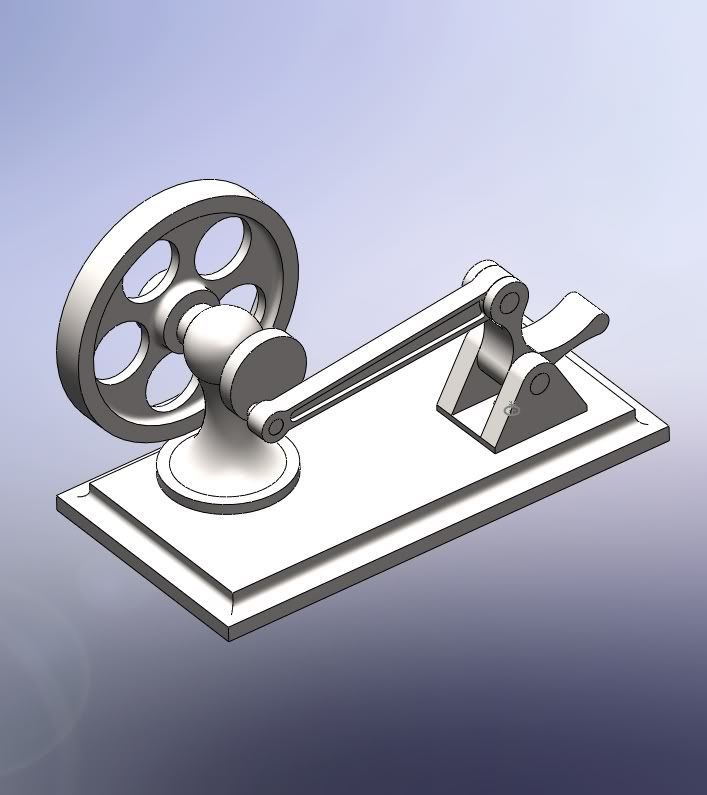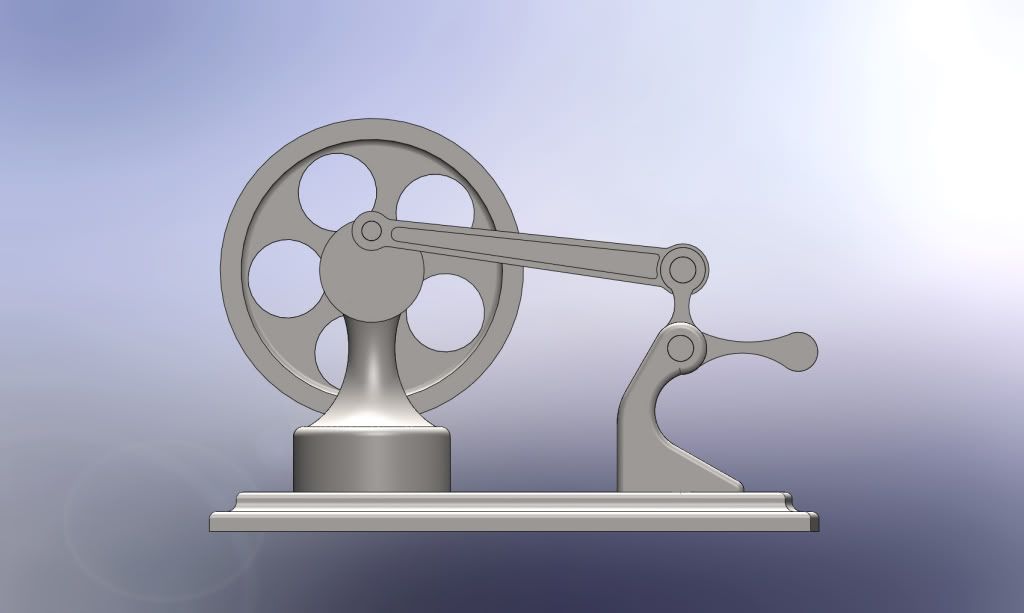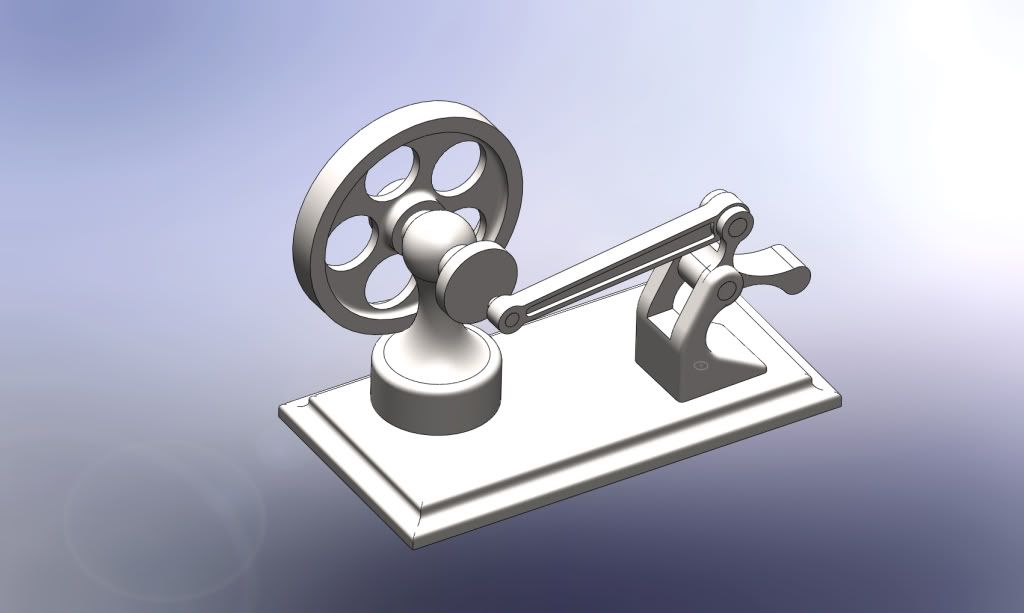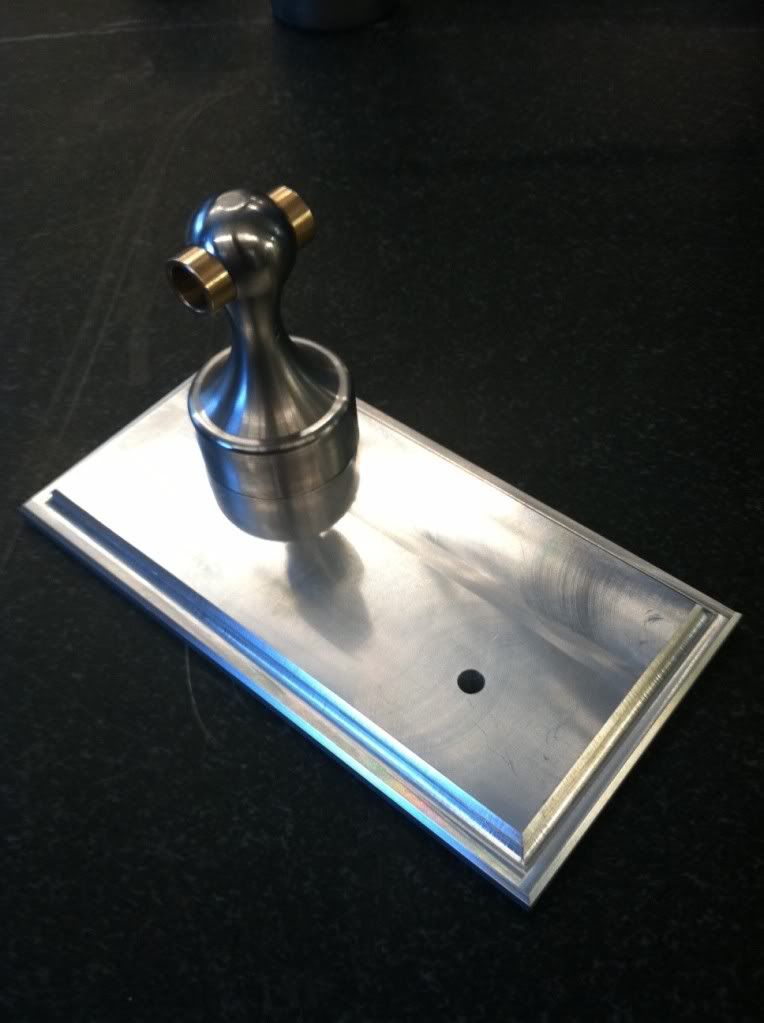Lamachina58
Well-Known Member
- Joined
- Nov 13, 2010
- Messages
- 74
- Reaction score
- 0
Treadle Finger Engine
I've drawn this model up in solidworks as a CNC project for the students in our CNC course at the University of Montana Helena College of Technology.
Our goal is to manually program most of the parts using G-code.
I've based the design off many I found on HMEM and links from other users build threads. Any suggestions would be appreciated!
One tool we use that is extremely helpful is a small program called NCPlot. It is a simple program that helps you visualize the toolpaths as you write the code. This allows us to proof our programs and free up our machines.
I will post photos as we go!

Treadle Finger Engine
Enjoy!
Tom
I've drawn this model up in solidworks as a CNC project for the students in our CNC course at the University of Montana Helena College of Technology.
Our goal is to manually program most of the parts using G-code.
I've based the design off many I found on HMEM and links from other users build threads. Any suggestions would be appreciated!
One tool we use that is extremely helpful is a small program called NCPlot. It is a simple program that helps you visualize the toolpaths as you write the code. This allows us to proof our programs and free up our machines.
I will post photos as we go!

Treadle Finger Engine
Enjoy!
Tom








